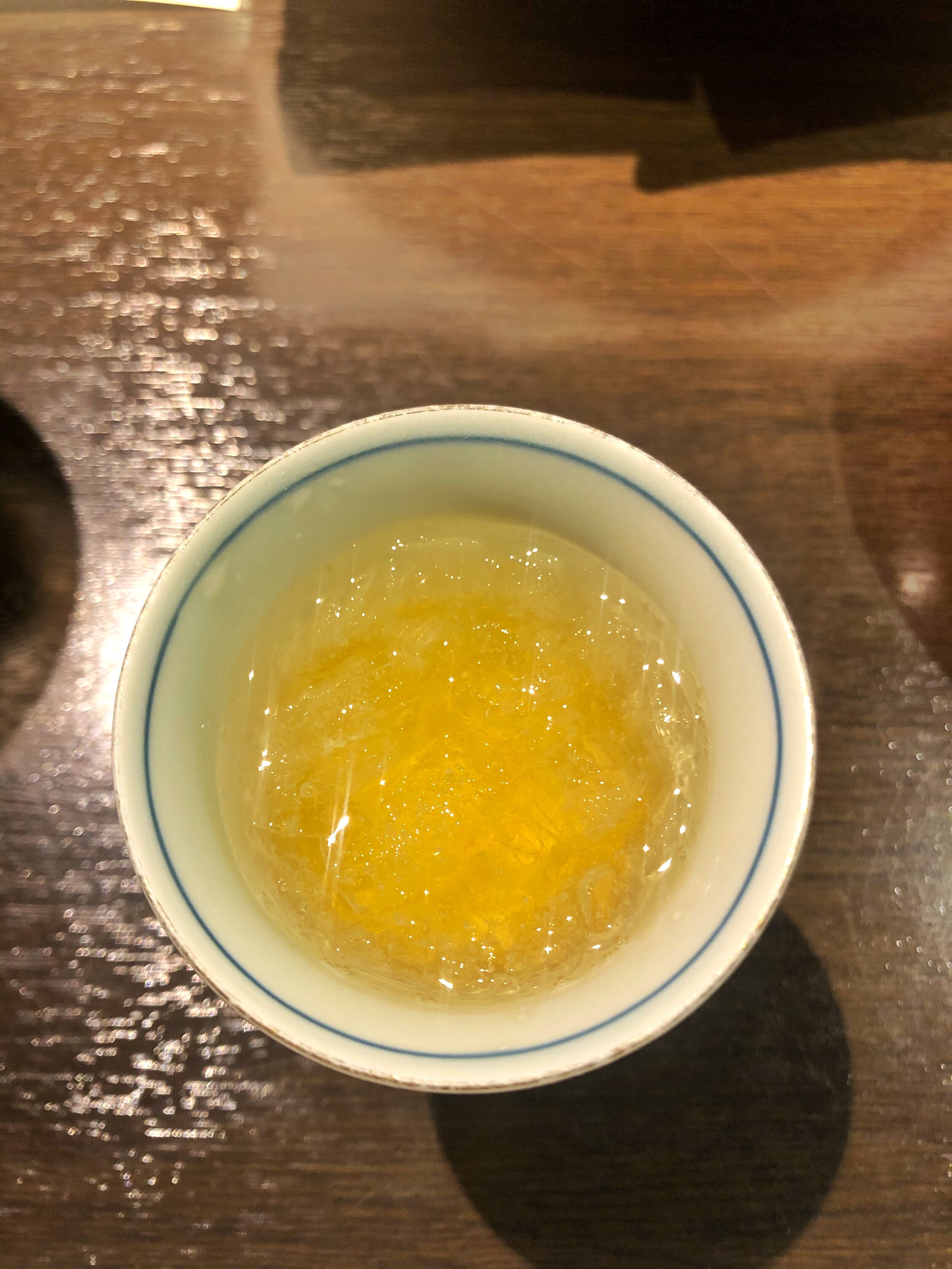
What is Kaiseki?
Kaiseki in one of it’s most simplest definitions is the serving of seasonal Japanese flavours, building from light to heavy tastes, presented on an array of beautiful traditional ceramics (often decorated with details of the current season’s flora).
It is the haute-cuisine of Japanese cooking.
When selecting a Ryokan to stay at, the food is of equal importance to me as is the private onsen I will be enjoying. I will always include meals in my Ryokan stays, as it’s just such a wonderful and enjoyable experience.
There are actually two styles of Kaiseki:
Kaiseki Ryori (懐石料理) is the traditional Japanese multi-course dinner which you will be served at Ryokans.
Cha-Kaiseki (茶懐石) from which Kaiseki originally stems from, is the simple traditional meal served before ceremonial tea.
The range and amount of dishes you will be served are up to the Chef’s discretion. Generally you will find most Kaiseki’s have anywhere between 8 - 18 little dishes, depending on the season, the amount of produce available and simply the Ryokan’s preference.
Recently I’ve noticed some Ryokans giving the option of a “simple/light” Kaiseki dinner as well as the “classic” Kaiseki (terminology differs for every Ryokan). There are always options to have more “premium” style Kaiseki (which often include Wagyu/whole fish/uni etc). I tend to always pick the normal “classic" Kaiseki as they are often delicious and have more than enough food for me.
However if this is a “once in a lifetime” experience for you, add those extra premium food items!
Below are some photo examples and brief descriptions of dishes you may be served at your Kaiseki!
THE BEGINNING
SAKIZUKE | 先附
a starting appetizer, often a small cup of regional/ homemade umeshu/sake in my experience
SUIMONO | 吸い物
#1 of the FUTAMONO | 蓋物
a "lidded dish"; typically a soup.
TAKIAWASE | 煮合
generally bright vegetables served with meat, fish or tofu.
The ingredients are simmered separately.
WANMONO|椀物
#2 of the FUTAMONO | 蓋物
another type of lidded soup dish served in between the mains.
NAKA CHOKO | 中猪口
another palate-cleanser; may be a light, acidic soup.
MIZUMONO | 水物
a seasonal dessert/local dessert specialty
eg. fruit,
some types of sweets, ice cream or cake.
HASSUN | 八寸
the second course, which sets the seasonal theme.
Typically one kind of nigiri and several smaller side dishes
AGEMONO |
揚げ物
A deep fried dish; typically seasonal tempura,
some fresh seafood & local vegetables
SUZAKANA | 酢肴
SUNOMONO |
酢の物
vinegared appetizer: a small dish generally of vegetables served midway in between the mains generally to cleanse the palate.
SHIIZAKANA | 強肴
another main dish which should be of substantial “stomach filling” nature, also signifies the kaiseki is coming towards its end. Can be a meat/fish/hotpot dish.
MUSHIMONO | 蒸し物
A steamed dish (often CHAWANMUSHI | 茶碗蒸し ie. steamed egg custard) filled with seasonal ingredients like mushrooms, pieces of seafood, local vegetables & most likely a gingko nut.
THE MIDDLE
MUKOZUKE | 向付
OTSUKURI | お造り
a sliced dish of seasonal sashimi.
YAKIMONO | 焼物
some type of flame grilled m
ain, can be fish or meat.
Presented generally in a dish of pretty pottery/earthernware.
NABEMONO | 鍋物
a type of SHIIZAKANA
| 強肴
the soup hot pot dish, can be served with tofu,
vegetables and/or meat
this particular one is an Aomori Prefecture speciality
SHIIZAKANA | 強肴
the 2nd night
remember my tip about staying more than one night… and the food becomes even better… this was part of our SHIIZAKANA on our 2nd night… so much food!
THE END | THE SHOKUJI
GOHAN | 御飯
KONOMONO | 香の物
TOMEWAN | 止椀
rice dish made with seasonal ingredients with seasonal pickled veggies & a miso-based soup
NOTE:
HIYASHI BACHI | 冷し鉢 is a dish in the Kaiseki repertoire that I have never experienced, as traditionally it’s only served in the summer, when I’m normally overseas. The dish is meant to consist of chilled, lightly cooked vegetables.















